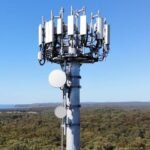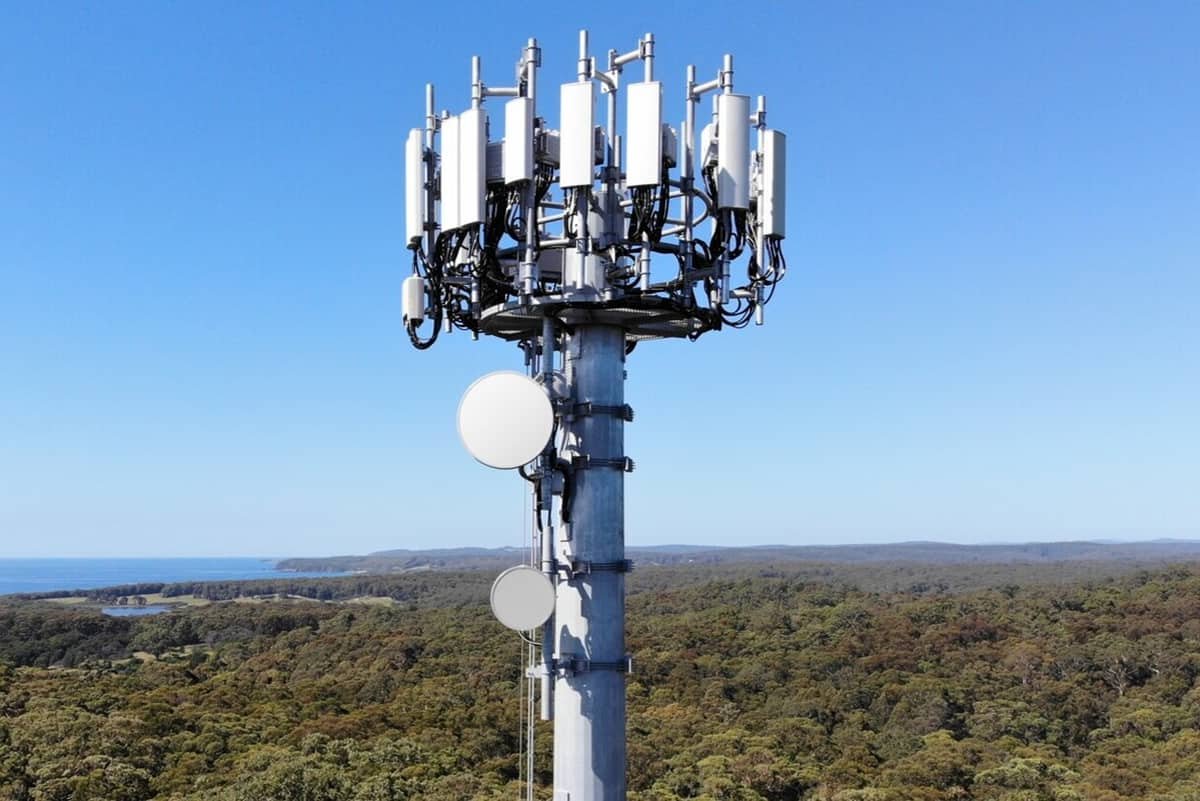mmWave 5G smartphones are revolutionizing how we connect, promising blazing-fast speeds and unprecedented bandwidth. Dive into the world of next-generation mobile technology, where lag is a distant memory and immersive experiences become reality. This guide will uncover the secrets behind mmWave technology, exploring its capabilities, the cutting-edge hardware that powers it, and the exciting applications it unlocks.
From understanding the fundamental principles of mmWave to examining the latest smartphone models, we’ll explore the advantages and limitations of this groundbreaking technology. Discover how mmWave 5G is poised to transform everything from mobile gaming and video streaming to augmented reality and virtual reality, all while navigating the challenges and future developments that lie ahead.
mmWave 5G Smartphones: A Deep Dive
mmWave 5G smartphones represent the cutting edge of mobile connectivity, promising unprecedented speeds and a new era of mobile experiences. This article explores the intricacies of mmWave technology, its benefits, challenges, and future potential. We’ll delve into the technical aspects, user experiences, and market trends shaping the landscape of this exciting technology.
Introduction to mmWave 5G Smartphones
mmWave, or millimeter wave, technology utilizes extremely high-frequency radio waves (typically 24 GHz and above) to transmit data. This is in contrast to sub-6 GHz 5G, which operates on lower frequencies. 5G, the fifth generation of wireless technology, encompasses a range of frequency bands, each offering different trade-offs between speed, coverage, and capacity. mmWave stands out due to its ability to deliver multi-gigabit speeds, making it ideal for bandwidth-intensive applications.
The primary advantage of mmWave 5G lies in its ability to provide significantly faster data transfer rates compared to other 5G technologies, enabling low latency and high-capacity connectivity.
Technical Specifications of mmWave 5G Smartphones
Several key hardware components enable mmWave connectivity. These include specialized antennas, advanced chipsets, and sophisticated modems.Antenna designs are crucial for mmWave smartphones. Because mmWave signals have a short range and are easily blocked by obstacles, these phones utilize multiple antenna arrays, often with beamforming capabilities. Beamforming focuses the radio signal towards the user’s device, enhancing signal strength and improving coverage.The chipsets and modems are responsible for processing and transmitting mmWave signals.
Qualcomm, Samsung, and MediaTek are leading manufacturers of these components, integrating mmWave support into their latest mobile platforms.
| Specification | Model A | Model B | Model C |
|---|---|---|---|
| Processor | Snapdragon 8 Gen 2 | Exynos 2300 | Dimensity 9200+ |
| RAM | 8GB / 12GB | 8GB / 12GB | 8GB / 12GB |
| Storage | 128GB / 256GB / 512GB | 128GB / 256GB / 512GB | 128GB / 256GB / 512GB |
| Battery | 4700 mAh | 4600 mAh | 4800 mAh |
| mmWave Bands Supported | n260, n261 | n257, n260 | n257, n260, n261 |
Benefits and Use Cases of mmWave 5G
mmWave 5G significantly boosts data transfer speeds and reduces latency, creating new possibilities for mobile applications.
-
Benefit: Ultra-fast data transfer and minimal lag.
Application: Augmented Reality (AR) experiences, such as interactive product demos or immersive gaming.
Impact: Provides a seamless, responsive AR experience with high-resolution graphics and real-time interaction. -
Benefit: High-bandwidth streaming and instant downloads.
Application: Ultra-high-definition (UHD) video streaming, including 4K and 8K content.
Impact: Enables buffer-free streaming of high-quality video on the go. -
Benefit: Enhanced multiplayer gaming with low latency.
Application: Mobile gaming, especially online multiplayer games.
Impact: Reduces lag and improves responsiveness, leading to a more competitive and enjoyable gaming experience.
Challenges and Limitations of mmWave 5G, MmWave 5G smartphones
mmWave technology faces several challenges, primarily related to signal propagation and environmental factors.mmWave signals have a short range, typically extending only a few hundred meters. They are also easily blocked by obstacles like buildings, trees, and even human bodies. Weather conditions, such as heavy rain or snow, can further degrade signal quality. Power consumption is also a concern, as mmWave radios require more energy than sub-6 GHz counterparts.Here are the major limitations of mmWave 5G and their respective solutions:
- Short Range: Solved by deploying a dense network of small cells, often mounted on streetlights or buildings.
- Obstacle Penetration: Addressed through beamforming technology, which focuses the signal, and by strategically positioning base stations.
- Weather Interference: Mitigation includes advanced signal processing techniques and the use of higher-power transmitters in base stations.
- Power Consumption: Improved through more efficient chipsets and power management techniques in smartphones.
mmWave 5G Smartphone Availability and Market Trends
Several major smartphone manufacturers have already launched mmWave 5G devices.Currently, leading manufacturers include Apple, Samsung, and Google, offering mmWave-enabled smartphones in select markets. The geographic availability of mmWave 5G networks is still limited, with deployments primarily in urban areas of the United States, South Korea, and Japan. Future trends in mmWave 5G smartphone development include further miniaturization of antennas, improved power efficiency, and the integration of mmWave support across a wider range of devices.
| Release Date | Manufacturer | Model | mmWave Bands Supported |
|---|---|---|---|
| September 2022 | Apple | iPhone 14 Pro | n260, n261 |
| February 2023 | Samsung | Galaxy S23 Ultra | n260, n261, n257 |
| October 2022 | Pixel 7 Pro | n260, n261 | |
| August 2023 | Samsung | Galaxy Z Fold5 | n260, n261, n257 |
mmWave 5G vs. Other 5G Technologies
mmWave 5G and sub-6 GHz 5G each play a crucial role in the 5G ecosystem.Sub-6 GHz 5G offers wider coverage and better penetration through obstacles, while mmWave delivers significantly faster speeds. Both technologies have advantages and disadvantages. Sub-6 GHz provides a broader coverage area, while mmWave offers higher speeds but a shorter range. The cost of deployment for mmWave is generally higher due to the need for a denser network infrastructure.
- Speed: mmWave offers multi-gigabit speeds; sub-6 GHz offers speeds comparable to 4G LTE, but with lower latency.
- Range: mmWave has a short range (hundreds of meters); sub-6 GHz has a wider range (several kilometers).
- Cost: mmWave deployment is generally more expensive due to the need for a dense network of small cells; sub-6 GHz is less expensive to deploy.
The User Experience with mmWave 5G Smartphones
The user experience with mmWave 5G smartphones is characterized by blazing-fast speeds and low latency.Video streaming, online gaming, and file downloads are significantly enhanced by the high bandwidth provided by mmWave. However, the user experience can vary based on the environment and network conditions. In areas with strong mmWave coverage, users can expect near-instantaneous downloads and lag-free streaming. In areas with poor coverage, the device may switch to sub-6 GHz or 4G, resulting in slower speeds.
“Standing in a crowded stadium during a live concert, I experienced seamless 4K video streaming and instant uploads to social media, a stark contrast to the buffering and slow speeds I’d experienced with previous generations of mobile technology.”
Future Developments in mmWave Technology

Source: digitaltrends.com
The future of mmWave technology holds exciting possibilities for further advancements.
- Advancements in mmWave antenna technology, including the development of more compact and efficient antenna arrays.
- The development of new mmWave frequency bands, potentially opening up even greater bandwidths.
- Ongoing research and development efforts to improve mmWave performance, including signal propagation and power efficiency.
Conclusive Thoughts: MmWave 5G Smartphones
In conclusion, mmWave 5G smartphones represent a significant leap forward in mobile technology, offering unparalleled speeds and paving the way for exciting new applications. While challenges remain, the potential of mmWave is undeniable. As the technology evolves and networks expand, the user experience will continue to improve, ushering in a new era of seamless connectivity and immersive digital experiences. Embrace the future; experience mmWave 5G.
